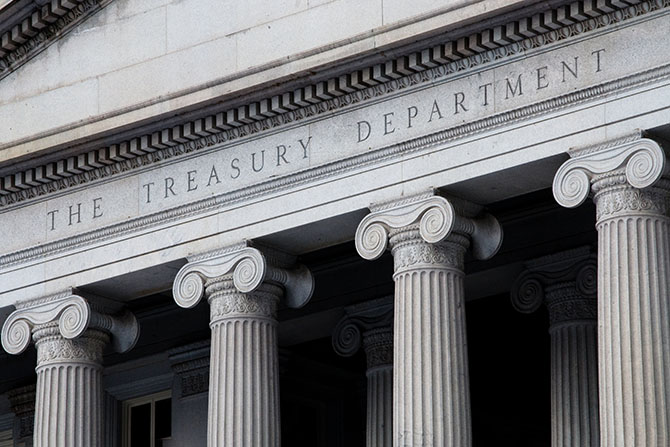In December, both Fitch and S&P Global projected default rates for leveraged and high-yield loans will continue to rise in 2024.1 Against that backdrop, lenders would be wise to check in on the status of their collateral and loan documents and, if necessary, shore up any discovered issues. More specifically, lenders with multiple loans to the same borrower, or affiliated borrowers, with different kinds of collateral should double-check that their loan documents contain enforceable cross-collateralization language and that the liens created pursuant to their collateral documents are properly perfected. Finally, lenders should take this opportunity to test (and potentially revise or add) the financial covenants in their documents to better understand the effects of the high-interest rate environment on their borrowers.
Cross-Collateralization is King
Cross-collateralization — the mechanism by which a lender secures multiple credits to the same borrower and/or affiliated borrowers across the assets of said borrower and/or affiliated borrowers — can be a powerful tool to ensure sufficient collateralization. In addition to providing more buckets for security, cross-collateralization can also ensure general compliance with all terms (e.g., timely payments, covenant compliance, etc.) for all loans that are secured by the same collateral by including cross-default provisions. Knowing whether your loan documents have sufficient provisions is important, and if you do not have these provisions, it may be time to insist on including them at the appropriate time for an amendment. Even if your loan documents have cross-collateralization provisions, be sure to review the mechanics of the applicable provisions to make sure they function appropriately.
Perfection is Premier
Lenders should always strive to ensure that their liens are properly perfected. When the risk of defaults rises and the accompanying pendent risk of bankruptcy looms, the importance of making sure that liens are properly perfected is elevated. This is primarily because if a lender is not perfected when its borrower files bankruptcy, the lender becomes practically an unsecured creditor. Section 544 of the Bankruptcy Code provides that upon the filing of a bankruptcy, a Chapter 7 trustee (or a debtor in possession in a Chapter 11 case) is provided the status of a hypothetical judgment creditor with a judgment lien. Further, section 544 also provides that a Chapter 7 trustee (or debtor in possession in a Chapter 11 case) can use that status as a judgment lien creditor to “avoid” any unperfected lien. Unfortunately, rushing to perfect the liens after discovery (by filing forgotten UCC-1 financing statements or untimely continuation statements, for example) may not necessarily solve a lender’s problem because section 547 of the Bankruptcy Code provides that even if a lien was perfected prior to bankruptcy, it may still be “avoidable” if the perfection was done within the 90 days prior to the bankruptcy filing. Section 547 of the Bankruptcy Code provides generally that certain “transfers” performed within the 90 days immediately preceding a bankruptcy filing are avoidable. Generally, unless certain exceptions apply, the filing of a UCC-1 (or other means of perfecting a lien) in the 90 days prior to the bankruptcy filing will be considered a “transfer” for purposes of section 547. Thus, lenders should take care to ensure that their liens are properly perfected and, if not, move expediently to rectify any issues related to perfection.
Time to Shine a Light on the Lite Covenants
In recent years, loan documents have become increasingly light on financial covenants. Nevertheless, now is the time to review and analyze those financial covenants and the effects of the high interest rate environment on those covenants. Common financial covenants include Debt Service Coverage Ratio (DSCR), Interest Coverage Ratio (ICR), Loan to Value (LTV) and Debt-to-Equity Ratio (D/E ratio). Although the effect of higher interest rates on the first two covenants mentioned is obvious (i.e., higher interest rates lead to higher interest costs and therefore higher monthly payments), the effect of higher interest rates on the latter two covenants may not be as obvious. As interest rates rise, assets whose value is tied to cash flow (i.e., CRE assets) will decrease in value due to higher discount rates applied as a result of higher working average cost of capital calculations. Lower asset values, in turn, could likely trigger issues with LTV covenants. Similarly, lower valuations of assets will likely cause issues with D/E ratio covenants.
Plan of (or Plan for) Attack
As suggested, lenders should first review their loan and collateral documents to ensure that their documents are consistent with their understanding of the collateral package. Likewise, care should be taken to check that the liens granted in the collateral documents have been properly perfected, that the lenders have proof of the proper filings and that there have been no lapses in the UCC filings. Finally, lenders should check and test the financial covenants in the loan documents to understand the effects of the present economic environment on their borrower and their collateral. In the event a lender discovers an issue, the loan covenants may present an opportunity for the lender to engage with its borrowers to discuss the issue and provide an avenue for resolving the identified concerns and issues.


Jason Kathman and Zachary Fairlie are partners on the Spencer Fane Bankruptcy, Restructuring, and Creditors’ Rights team. They can be reached at jkathman@spencerfane.com and zfairlie@spencerfane.com, respectively.
- Default Rates to Rise in U.S. and Europe as Weaker Growth Offsets Rate Cuts; Default, Transition, and Recovery: Higher Rates For Even Longer Could Push The U.S. Speculative-Grade Corporate Default Rate To 5% By September 2024.








